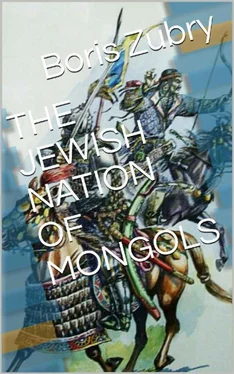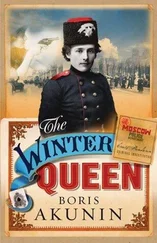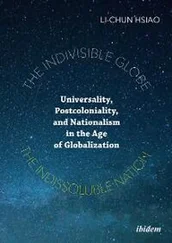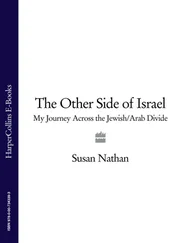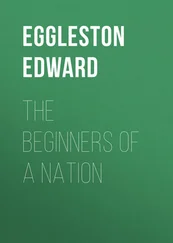The Williamsburg boundaries are well defined by the Williamsburg Bridge to Manhattan and the surrounding areas on the Brooklyn side. The neighborhood is roughly circumscribed by Newtown Creek to the north, Queens to the east, Flushing and Kent Avenues to the south, and the East River to the west. What a location. What a view. It’s like one of the wonders of the world. Is that where the Jews were meant to end up when leaving Egypt? So, they did; so, they did. North 7th Street segregates the two unique neighborhoods with Greenpoint to the north and Williamsburg to the south. One can get there even using public transportation like the subway or a bus. The subway stops in that area are The G train to Greenpoint, Nassau, or Metropolitan Avenues, or the L train to Bedford Avenue or Lorimer Street. And that’s the place where the Cohens as well as many other Jews from the Mogilev Gubernia of the Russian Empire and thus, from the rest of the world had settled down with the hopes for freedom and in anticipation of so much good. Good was in the air, well, most of the time, and not exactly everywhere, still in many places, and often.
God led Jews out of bondage once before, and it worked out for a while. This could be the second time or the third. Why argue with the authority? Maybe the Russian Tsar followed God’s will and kicked the Jews out so, they could come to America, and enjoy the good life for a little while? And what is next? Well, the Jews could stay wherever they were for much longer, or they could be kicked out again. Only God knew that and maybe for sure, but those were the options. Thus, do not take your hat off and don’t really unpack. You may have to go, and soon. But where? The Earth was not such a big place. Well, God knows. God was the one with the power of decision. But, he had the ability to apply force. If that decision was made, Jews could be kicked back to wherever they came from or to a new place, or to a place where they visited already centuries ago but did not finish what they had to finish. What was that place? Do you know? Do you remember? The Bible and the history books would keep you informed. That’s where the experts get their knowledge, the expertise. Who knows what that place and the unfinished business was, but maybe it was time to go back there, and find it out? Maybe. Do you think Israel, Jerusalem? Was it even possible? Every Jew from everywhere all over sudden would go to the same place called Israel, and then what. Are they ready, the Jews over there? Do they want it? Do they want us? Maybe. Do you? But, could they handle it? All of it… So many. Perhaps. What if the next year they would be in Jerusalem. Knock, knock — we are here. Ready or not. What a story. What a dream. We would all meet in one place. Baruch Hashem! (God bless). Baruch Hashem! Is not that what you say when you want something so much, and it keeps pulling away, but you still hope?
The Cohens came from the Mogilev Gubernia (province), Orsha Uyezd (region) of Belorussia . The Orsha Uyezd, back then, mainly consisted of a multitude of small and large towns, villages, and the Jewish shtetls (settlements) with the total population of about 14000 people, and nearly 8000 Jews. Remember “Fidler on the roof” and Tevye, the Jewish milkman? That’s it, that’s the people and the place. It was almost the Jewish haven on earth if not for the Gentiles and the Tsar, and the government-sponsored anti-Semitism. Some of the Jewish towns were: Alexandria, Babinovichi, Dobromysl, Gritsevo, Gusino, Kochanovo, Liozno, Lubavichi, Mikulino, Orsha, Rudnia, Smolyani, and Starosele. And then, there were the villages and the hamlets.
The family of Cohens for generations, since the seventeenth century, when they arrived from Poland, used to live in Lubavichi. Before Poland, they resided briefly in Spain, Portugal, Germany, and Bohemia, and none of it, but Poland, lasted for any considerable period. The Jews could never grow the roots in any of those places and always got uprooted well before they were ready. The Ukrainian Cossack’s revolutionary uprising in Poland in the mid-seventeenth century resulted in the death of over 100,000 Jews living there so, the surviving Jews hurriedly went to Russia where protection was guaranteed, for the time being, by the Tsar. At the time, there were five to six hundred thousand Jews in all of Poland. So, every fifth Jew was killed by the Ukrainians, but do we know all of it? Did anyone really count the living or the dead? Back then? Back there? Did they care? Yet, the numbers could be close to reality considering the information we have.
The Tsar was growing his empire, and the Jewish skills were quite welcome. Some of the Jews were well educated and talented and offered the skills not easily found in the stone age minded Russia. But Russia wanted it. Now, Jews had a protector. With time, the Cohen family settled down in the Mogilev Gubernia of Belorussia. Back then, Belorussia was the most significant part of the Lithuanian Duchy, and the Russian Tsar eventually became the Duke of these territories. The land was plenty there, and the Tsar wanted to populate it, building a human barrier with Western Europe. Good and reliable people always were needed, and the Polish Jews were welcomed for the money and the management skills accompanied by the outstanding craftsmanship. Also, Jews had a big problem with the Poles and the Ukrainians and would stay on the side of Russia no matter what. They were not very loyal to Russia but would not betray it to Poland or Ukraine. Although Jews were strange people, they were known for being friendly, quiet, polite, trustworthy, very accommodating, and not threatening to the ruling regime. In short, they were needed and could be tolerated. Perfect. That was the understanding most of the Russian nobility supported. The decision was made, the Jews were let in, and the rules with some rare exemptions were made.
At the end of the nineteenth century, the entire Mogilev Gubernia had 85 Jewish communities (shtetls ) with a total population of about 110,000 people. It was growing like mushrooms and prospering as it only could. The greatest Jewish shtetl in the gubernia was Shklov, followed by Mogilev, Dubrovno, Gomel, Tolochin, and Smoliany. At that time, Jews were moving dynamically from shtetls to the towns of Mogilev, Orsha, Gomel, and since 1880, they began actively to emigrate abroad. America was the place, but that was not easy. It was done not out of the desire for adventure or of the search for prosperity, but of the necessity. The times in Russia changed, and Jews were not welcome any longer. And, it was increasingly becoming dangerous, no matter where you lived. Lives were more and more at stake. The royal decrees of resentment, government-sponsored pogroms, and the military drafts forced the Jewish population of the Russian Pale to get up and to start moving shtetl -by- shtetl and town-by-town. Where to? What difference did it make for as long as you knew where from? It was a general consent that anywhere would be better, but some places were better than that. America, the entire continent, was on so many minds. As many times before, the Jews were on the move in search of safety, and a maybe better life. It was never the case of the greener grass on the other side, but grass or no grass, living or not. A new exodus was in the making.
The Hasidic movement Chabad was founded in the 18th century by Shneur Zalman of Lyady. The name of the movement — Chabad has derived from the initials of the words Hokhmah (wisdom), Binah (understanding), and Daat (knowledge) . Shneur Zalman was opposed by Hasidic leaders living in Volhynia, as well as the mitnagdim (the opposition to the Hasidic movement) led by the Vilna Gaon (Torah Genius — Elijah Ben Solomon Zalman ). Nonetheless, the movement spread the wings out and received many followers. Many liked the idea and followed the leaders with not too many questions asked. Was it good or was it bad for the Jewish population back then and even now is still open for a discussion, and often, a spirited one. Shneur Zalman’s teaching was confined in the TANYA ( Hasidic Jewish book Likkutei Amarim , published in 1797). There, he developed a theosophical doctrine based on the KABBALISTIC principles of Isaac Luria . Initially, Chabad was centered exclusively in Eastern Europe, but after the First World War, it spread out to other lands due to the Jewish migration. That migration, as many times before, was forced by the wars where the Jews had to pay the heaviest price. If things did not go right for any of the fighting factions, Jews were at fault, and they had to recompense. Blood was a universally accepted currency. Whether they were guilty of anything was not really important yet, the claims were made at will. How could you argue with that? Who could argue with that? If you win, you die, and if you lose, you also die. But, if you stay quiet, you may survive. Blood was taken for payment, but money was much better. Yet, way too often, it was money, and then, the blood. Jews were so vulnerable and thus attractive for anyone with a weapon and the desire to hurt. They were many and almost everywhere. Protectors were a few and practically nowhere. Often protectors and the persecutors were the same. Often the pogrom organizers and the followers were wearing the military and the police uniforms. Sometimes they held important positions and were highly regarded, and frequently, highborn. The persecutors were well organized, funded, mobile, armed, protected, and free to do anything they wanted. And, the Jews had nothing, and no one to defend them. No one. If they fought back and, God forbid, killed someone, they could be held responsible. Back then, Jews had no lawyers, and the law had not become the Jewish profession yet. Life in the defenseless shtetel among the scared people relying only on each other and no other place to go was becoming too hard to bare. They took it for as long as they could, and it was time to pack up and move. That was Aaron’s ancestry, and, got tsu dankenhe (thank god), he was very proud of it. They were brave. With the lineage like that, how could one go wrong?
Читать дальше
